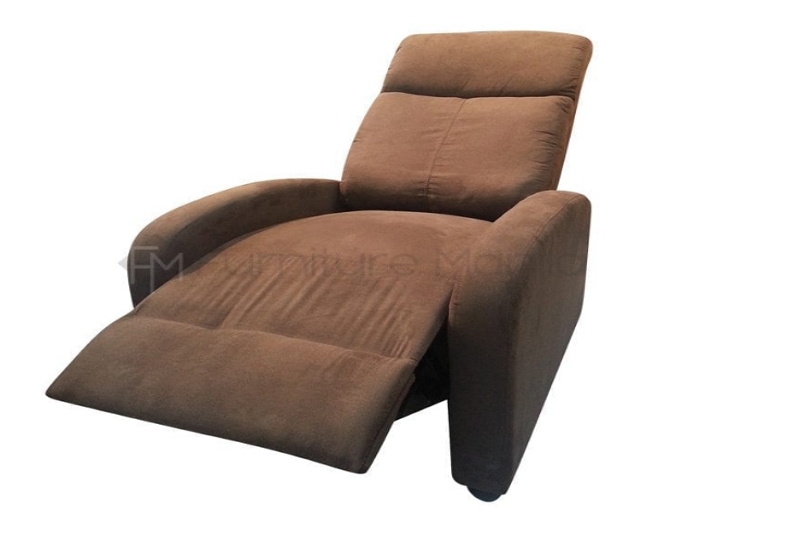How often have you found yourself reclining in your comfy chair, only to be disturbed by the sound of a creaking noise? You may not know why this is happening. It’s likely because if you’ve been using the same recliner for years, it will eventually lose its ability to stay in position.
But why does this happen? There are many reasons why your recliner might stop staying put and you must take note of them before getting rid of an otherwise perfectly good chair. Read on for more information!

Why Is My Recliner Not Staying In Position?
#1. The most common reason is a broken part, which can easily be fixed by replacing the faulty piece with a new one. One thing to note is that the recliner mechanism may not be as sturdy and durable as it once was when new. A lot of use over a long period can weaken the mechanisms, so replacing parts will help them stay in place for longer periods of time.
#2. Another common reason why your recliner might not stay put is that you’re using it wrong. There are different ways to recline and each one has an individual mechanism. For example, some chairs have a handle on the side that needs to be pulled down for it to stay put while others use levers or buttons near the headrest of the chair.
#3. The Bottom Line: If your recliner is not staying in position and you’re not sure why to take a look at the following common reasons:
How to fix a Recliner that Won’t Stay Reclined
Step 1. Check the recliner’s springs. Are they broken?
Step 2. Tighten any bolts to make sure that everything is firmly in place.
If that doesn’t work, try using a chain or cable to attach the top of your chair back with an anchor at its bottom end and then pulling on it until it’s tight.
If none of these work, you may need a new recliner.
How to Prevent Damages on a Recliner
Step 1. Don’t store items on top of the recliner.
Step 2. If you have pets, keep them away from it as well (especially if they like to scratch things).
Step 3. Keep your feet off of the recliner’s armrests and don’t put any weight onto its back or front rest.
Avoid leaning into it. Just use it for reclining purposes!
How to Vacuum a Recliner
Step 1. Remove as much loose dirt, debris, and hair from the recliner as you can.
Step 2. Use a vacuum attachment that will fit to clean up any leftovers on it.
Step 3. Vacuum in both directions with long strokes for deep cleaning; do not use circular motions because they might damage the fabric.
Note:
- Avoid using this attachment on the recliner’s armrests.
- Remove any excess hair or debris from it after vacuuming.*
- If you find your vacuum is not picking up everything, then use a hand brush to remove anything that might be stuck in between crevices.
- Using a fabric protector once every few months can extend the life of your recliner.
- Only use a fabric protector that is compatible with the type of material on your recliner so it doesn’t peel off or change color.
- Vacuum after applying for the best protection.
How to Prevent Stains on a Recliner
Keep a small tray near the recliner for holding items, such as snacks and drinks.
Place coaster under your cup or glass to prevent rings from forming on the surface of the furniture; you can also use placemats if available.
If it’s not convenient to place a coaster under glasses that hold liquids, use a coaster to place on top of the glass as well.
Use placemats under coffee cups or tea mugs to avoid stains and marks from being absorbed into the recliner surface.
Take off your shoes before you enter your living room or family room, if possible. This will prevent dirt and mud from getting onto areas of the furniture.
Place a floor mat near the recliner to collect dirt and mud from shoes before it’s tracked onto your floors.
Keep garbage cans out of bedrooms, living rooms, or family rooms so that spills are easy to clean up without them dripping on carpets.
How to Sanitize a New Recliner
Step 1. Before you start, make sure the recliner is unplugged. Allow it to cool down completely before beginning this process.
Step 2. Cleaning and sanitizing a new chair can be difficult because manufacturers tend to put residue on their products that prevent bacteria from growing.
Step 3. Start by vacuuming all of your furniture with an upholstery attachment and warm water.
Step 4. Immediately afterward, clean the recliner with a wet cloth. You’ll want to use a mixture of mild dish soap and water or vinegar diluted in warm water if you don’t have any other cleaning supplies on hand. Remember that different manufacturers recommend different methods when it comes to cleaning their products, so be sure to read the instructions on your recliner.
Step 5. If you have a pet, be aware that they may shed hair onto your furniture or upholstery as well. Vacuuming and washing can’t remove all of these dead skin cells, so it’s recommended to use a vacuum with an animal attachment.
Step 6. Once cleaning is complete, dry your recliner with a towel or cloth. It’s also recommended that you use compressed air to blow the excess water and soap away from the area being dried if possible.
Finally, make sure to store any extra materials in an accessible place so they are ready for next time.
